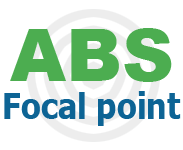
Tool to help you comply with the EU ABS Regulation
Your activities with genetic resources may be in scope of EU Regulation 511/2014 (the EU ABS Regulation). The aim of this tool is to help you determine if your activities are in scope of the EU ABS Regulation and, if this is the case, your obligations under the Regulation.
The tool covers the scope of the EU ABS Regulation and whether an activity with genetic resources constitutes utilisation in the sense of the EU ABS Regulation. The main body and Annex II of the revised EU Guidance document provide more information on what constitutes utilisation.
The terms in bold are explained in the list of important terms below the tool. Indicated section numbers (e.g. 2.1.4) refer to sections of the EU Guidance document. More information can be found on the pages linked to in the tool, in the EU ABS Regulation and in the revised EU Guidance document.
This interactive help tool is also available as a printable flowchart. The flowchart is to be used in combination with the information available on this page.
Are you unsure which answers apply to your activities or genetic resources? Feel free to contact the ABS Focal Point.
Please note: this tool provides information based on the EU ABS Regulation. It does not cover national rules and regulations of provider countries.
Important terms
Commodities
Genetic resources
‘Genetic resource’ means genetic material of actual or potential value. ‘Genetic material’ means any material of plant, animal, microbial or other origin containing functional units of heredity.
Derivatives may be considered to be in scope of the EU ABS Regulation. ‘Derivative’ means a naturally occurring biochemical compound resulting from the genetic expression or metabolism of biological or genetic resources, even if it does not contain functional units of heredity. See ‘Utilisation of genetic resources’ below for more information.
Mutually Agreed Terms (MAT)
Mutually agreed terms (MAT) are laid down in a contract between the users and providers of genetic resources. The MAT define the conditions governing the use of genetic resources and benefit-sharing. MAT may take the form of a material transfer agreement (MTA).
More information on MAT can be found on the page Important terms.
Prior Informed Consent (PIC)
Prior informed consent (PIC) means approval for access to and utilisation of genetic resources by the authorities of the country where access is sought (the Competent National Authority, CNA).
More information on PIC can be found on the page Important terms.
Provider country
Standard Material Transfer Agreement (SMTA)
The Standard Material Transfer Agreement (SMTA) is an MTA in a mandatory form for parties wishing to provide and receive material from the Multilateral System (MLS) of the ITPGRFA.
More information on the SMTA can be found on the page Important terms.
Utilisation of genetic resources
‘Utilisation of genetic resources’ means ‘to conduct research and development on the genetic and/or biochemical composition of genetic resources, including through the application of biotechnology’.
Utilisation of derivatives (whether or not containing functional units of heredity) is within scope of the EU ABS Regulation when access to derivatives also includes genetic resources for utilisation, e.g. when access to a derivative is combined with access to the genetic resource it is derived from.
For more information on what constitutes utilisation and when derivatives are within scope of the EU ABS Regulation, see the Guidance document published by the EU and When am I a user? on the ABS Focal Point website.
Disclaimer: The National Focal Point accepts no liability for the contents of this website. The information presented on this website can therefore not be used as the basis for any claims.
